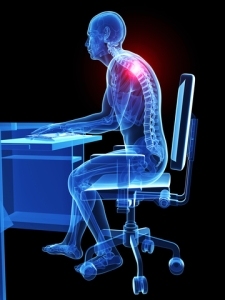Does your back pain make you feel miserable? Are you frustrated by the endless pain and discomfort? Does it make you feel hopeless? Are you petrified by the thought that your back pain might never end?
I’m not surprised, I felt the same way. Back pain sucks big time! And it can really take over your whole life!
You wake up in the morning already exhausted, why? Because your back pain was so bad you couldn’t get comfortable, so you lay there, sore, aching and exhausted. You pray for the sweet embrace of sleep. But it never really comes, you may doze for a while, but deep sleep evades you. You just can’t get comfortable enough to sleep well. So morning rolls around and you start another day tired, frustrated and in pain.
When the alarm goes off you are faced with your first challenge of the day; How am I going to get out of bed? Which will be swiftly followed by challenge #2, how am I going to get my socks on?
Sound familiar?
So you somehow manage to get out of bed and get dressed, grimacing in pain throughout the whole ordeal. But now it’s time for challenge #3, walking downstairs. Will I go down sideways? Or one step at a time? Or maybe backwards? But they all hurt! You struggle down the stairs holding on to the banister for dear life.
Sound like your experience?
Finally downstairs, you shuffle to the kitchen and prepare and eat your breakfast standing, of course. Not that you really enjoy it or have much appetite, because all your attention is consumed by your constant back pain.
Does this ring any bells?
Now its time for back pain challenge #4, sitting at your desk trying to get comfortable for your days work. (Pre pandemic this might have been a slightly different challenge, getting into your car, or on to public transport, or maybe mounting your bike) But now you’re working from home. So you head to your “office” and desperately try to find a sitting position in your chair that allows you to pay attention to your work, and not the constant aching pain in your back. You tried standing at the desk, but that just made your back hurt even more. Eventually you get into a position that is somewhat tolerable and start working. But its hard to concentrate when you have back pain.
You do your best tho, because you have to keep going right?
When lunchtime rolls around you consider taking some painkillers AGAIN but deep down you know they are not the answer, and you worry about taking them long term. Your mind briefly asks, surely theres’ got to be a solution. But there’s no time to think about that right now. You need to get some lunch. But that means now
you have to stand up, Challenge #5; “Hmmm… how am I going to get out of this chair?”
Sound like you?
During your lunch you wonder how long you can carry on like this.
In the afternoon, work gets busy, the pressure mounts a little. And you notice that the busier you are, the more intense you back pain becomes.
What’s that about?
But you grit your teeth and finally make it through to the end of your work day. You used to enjoy going for a run a few evenings per week after work to blow of the cobwebs. But since you developed this back pain you haven’t been able to run at all. In fact even walking for any distance is a challenge now, and afterwards your back pain seems to increase.
You really miss going for that run…
During dinner you snap at your partner, they were just asking you a question, but you feel so exhausted from the constant pain that it’s really beginning to affect your mood. You think back to your work day and realise you were quite abrupt in conversation with a colleague earlier too. You feel bad about being irritable, it’s just because your back pain is really getting to you now. But you don’t want to complain, and they wouldn’t understand anyway.
So you sit in front of the TV and try to distract yourself from the pain, binging on the latest series. And it kinda works, but eventually you have to go to bed. Which means you have to navigate the stairs again, undress, wash, and get into bed. Repeating all the challenges you started your day with in reverse order.
Sound familiar?
And to finish your day you are left with the prospect of another restless, painful and sleepless night, before you have to repeat it all tomorrow. With back pain. Again.
No wonder your back pain is getting you down.
If any of this sounds familiar to you, if you are currently living this reality, I’d like you to consider a possibility:
Imagine your life without chronic back pain.
What would it be like?
What would you do?
How would you feel?
Who would you be?
If you are interested in exploring the possibility of a comfortable pain free back, check out my Back Pain Relief Video Tutorial below. I want to help you because I had chronic back pain too. But it doesn’t have to be permanent. I want to share with you a simple Somatic Movement sequence I use to keep my back feeling comfortable and pain free. Watch it, follow along and experience what happens. Change is possible. Let me know how you get on. I want to help YOU.
If you know someone who is struggling with back pain, perhaps you could share this blog post with them.
P.S. You can also find this blog post at learnsomatics.ie/blog
As always thanks for reading!









